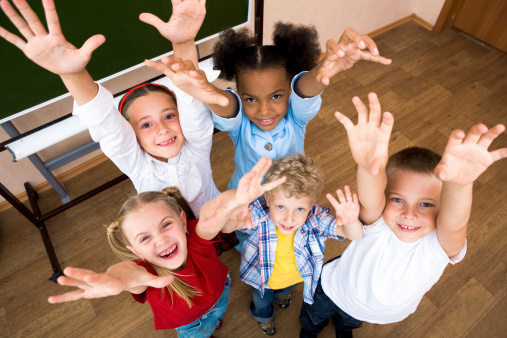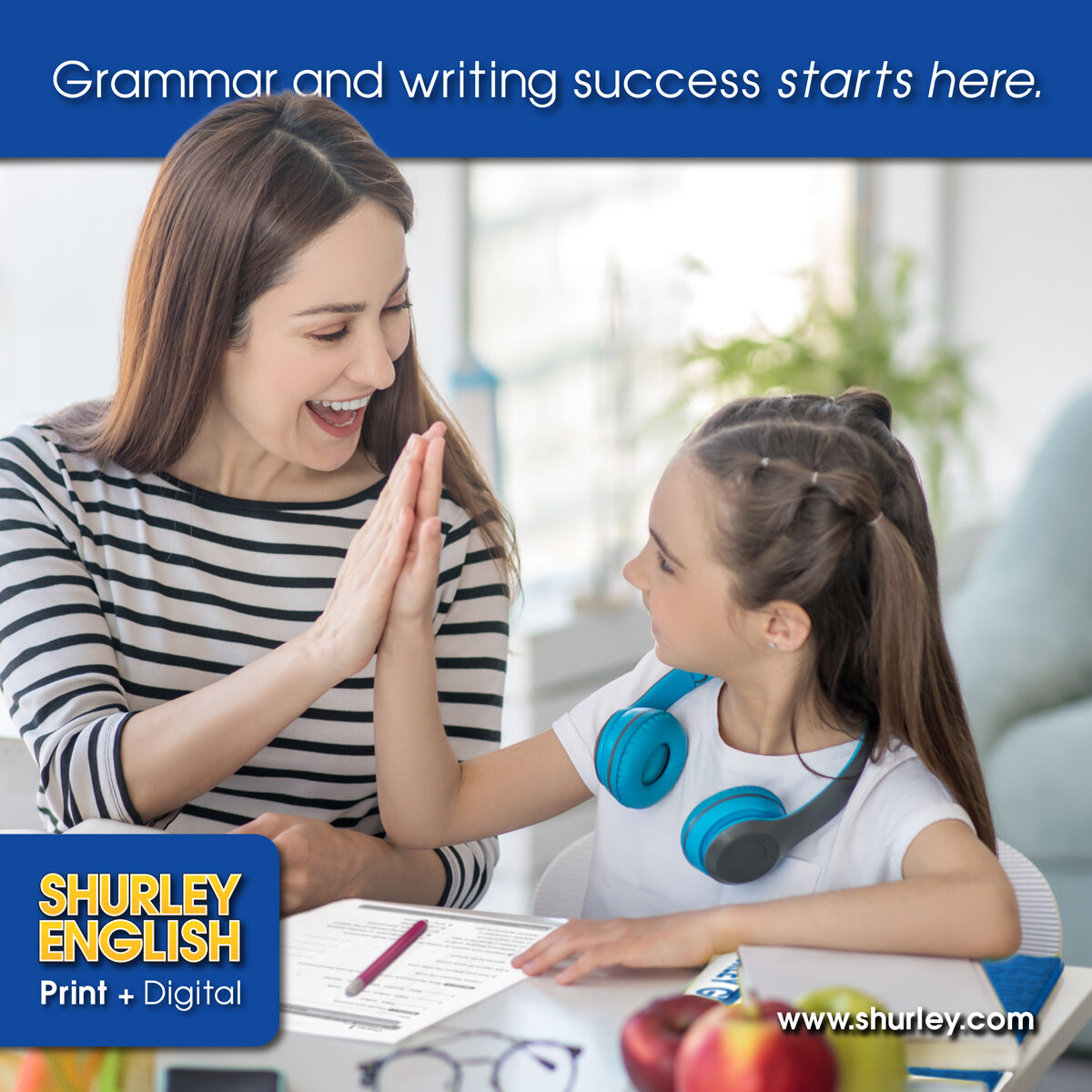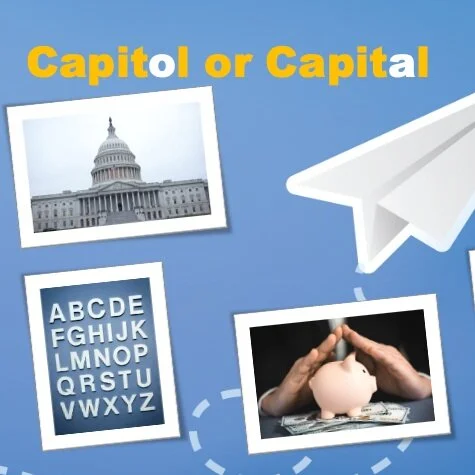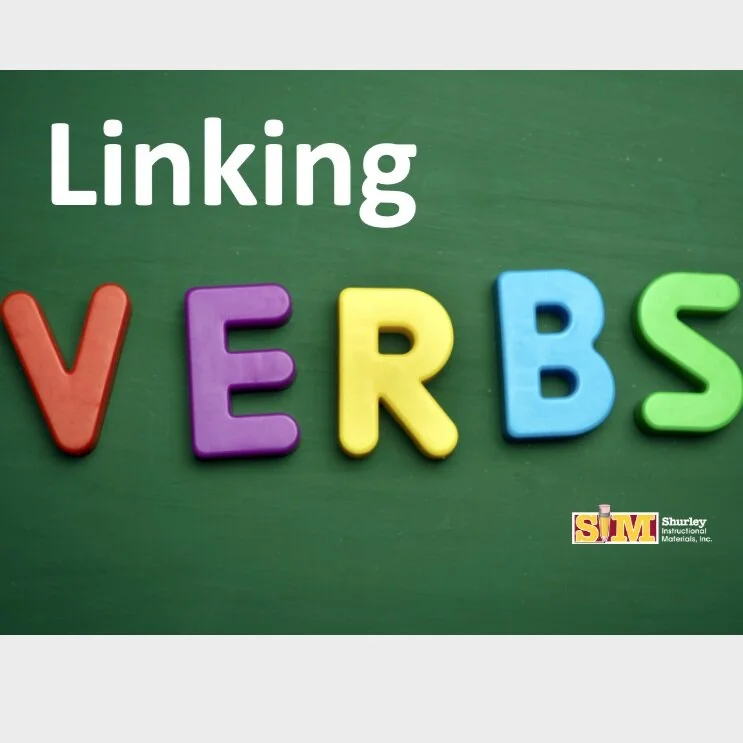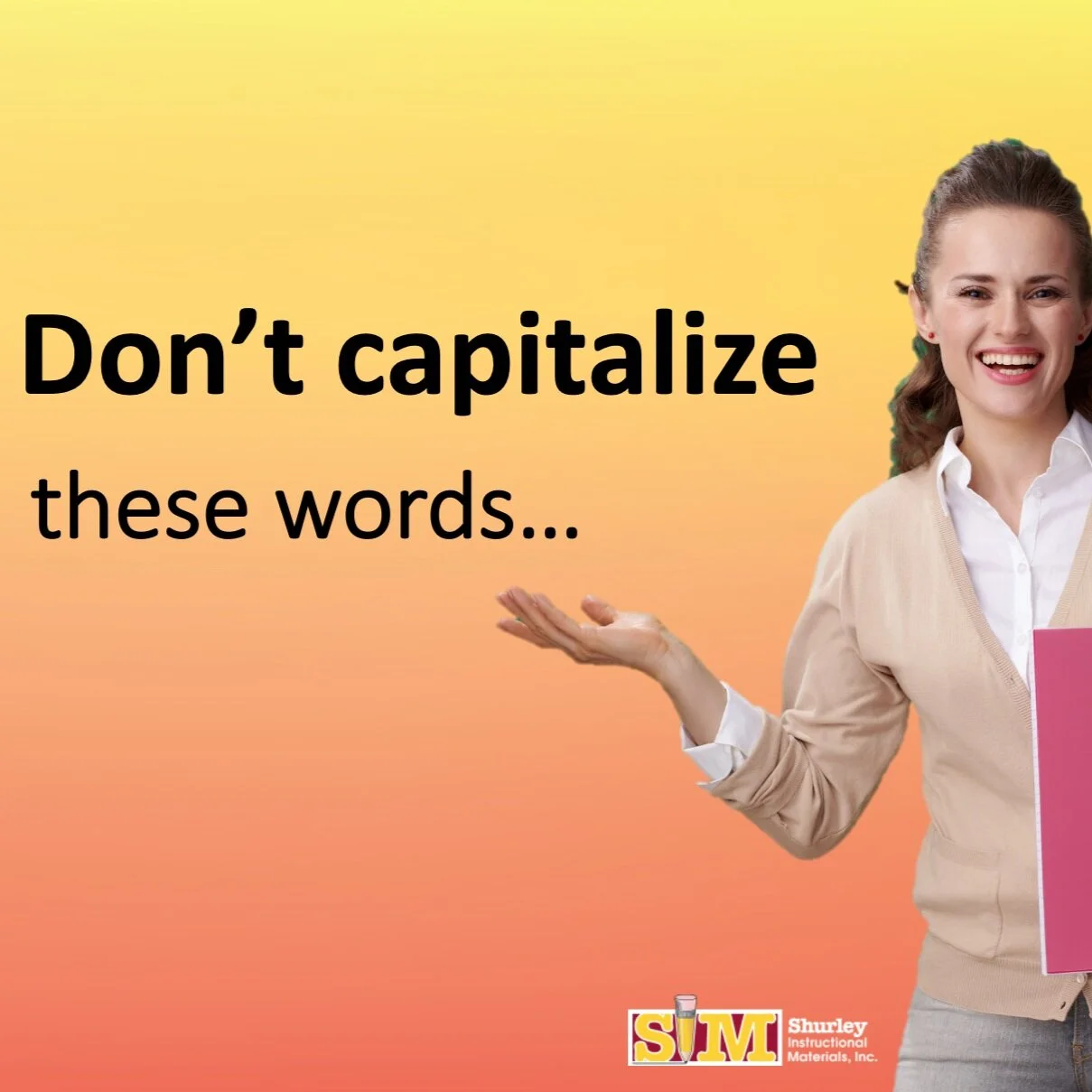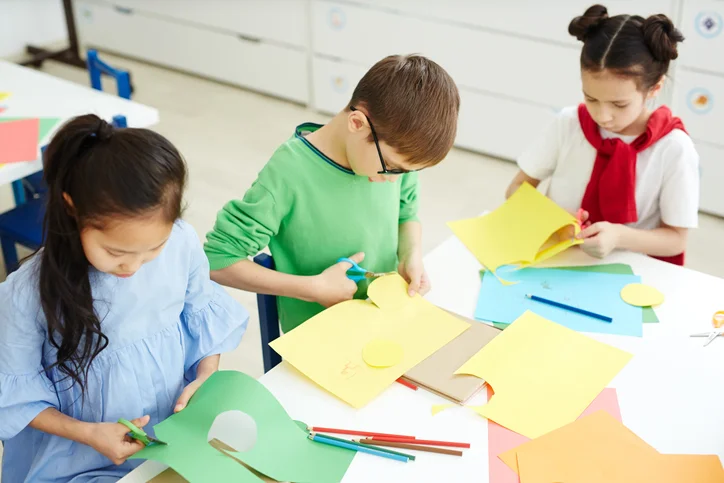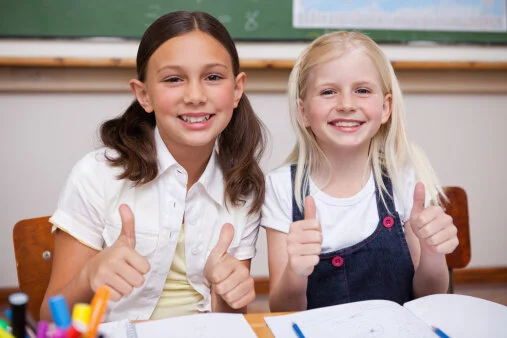Welcome to the Shurley English Blog! For the past thirty-five years, our mission at Shurley Instructional Materials has been simple. We do all we can to help teachers and students experience grammar and writing success. With that goal in mind, we wanted to create a space where our team of educators could share tips, tricks, and techniques to ignite learning. It’s all about educators helping educators on the Shurley English Blog. We invite you to join the conversation!
The Benefits of Using Drama Activities in Your Classroom
/Next up on the emotional intelligence list is—wait for it…drama in the classroom…the kind that won’t make you nuts! This subject is near and dear to my heart because I have been a community theatre enthusiast most of my life! I suppose I just gravitated toward drama because I liked the fantasy, the story, the chance to be someone else.
Read MoreWhy Playing Games Boosts Emotional Intelligence
/Last time, I told you about nine ways to ignite emotional intelligence in your classroom. I discussed how music can impact emotional connections to learning. Now, let’s examine how bringing games into the school day can support emotional intelligence.
Read MoreFREE Language Arts Jingles from Shurley English
/If you’re ready to learn English definitions in a fun and easy way, Shurley English Jingles are for you! Using domain-specific language, our definitions for the parts of speech and many other important language arts concepts incorporate rhythm, rhyme, and movement. Jingles provide the tools for critical thinking during sentence analysis and writing.
Read MoreEmotional Intelligence: How to boost learning with music
/If you are a teacher, you know that teaching—and learning—are emotional experiences. Thanks to neuropsychology and neuroscientists, we have some exciting ways to increase the joy in our classrooms, which in turn increases learning. Why? It’s one of the most basic concepts in teaching and learning…happy kids learn new things easier than stressed-out kids.
Read MoreBoost Your Mood With Gratitude
/Every year, Daylight Saving Time (DST) ends on the first Sunday in November, when clocks are moved back an hour at 2 a.m. local daylight time. When this happens, It takes our minds and bodies several weeks to adjust to the time change. On top of that, the early evening darkness can wreak havoc on our overall mood due to a reduction in the amount of sunlight we receive.
Research tells us that
Read MoreLanguage Arts Jingles: Add FUN to your ELA day
/If you’re ready to learn English definitions in a fun and easy way, Shurley English Jingles are for you! Using domain-specific language, our definitions for the parts of speech and many other important language arts concepts incorporate rhythm, rhyme, and movement. Jingles provide the tools for critical thinking during sentence analysis and writing.
Read MoreWhat is multi-sensory education?
/I have been dabbling with curriculum since I was a baby teacher and could barely crawl. If you’re a teacher, too, you probably have a similar story. I cut my teacher teeth on theories and practices from many different models, but the one that makes my brain do a happy dance is Multi-Sensory Learning.
The system of our senses is fascinating in and of itself, but what is extraordinary is that teachers can learn how to maximize a student’s awareness of how their senses work together to help them learn and retain knowledge. I also enjoy studying up on the latest neuro-research, and once again, multi-sensory education rises to the top of my favorites list. Here’s why…
When your brain reacts to stimuli, there will be a mini-explosion of both chemical and electrical responses. The brain has both sensory (Woo Hoo!) and motor regions that must communicate with each other. These regions get gabby by means of areas called association cortices (KOR tuh sees). These association areas are like bridges between the sensory (sight, sound, smell, touch, and taste) regions and the motor regions that direct how our bodies move. Based on fMRI images, we have learned that visual input influences sound input. Basically, what we see makes more sense if it is connected with an accompanying sound, and vice versa. We have further learned that if you combine the sense of touch with the senses of sight and sound, learning anything improves by almost 30% as compared to touch alone. That’s significant!!!
So, think about this. People learn better from words and pictures together than from words alone. If you can figure out a way to incorporate the sense of touch, then you have win-win-win as far as learning goes. Now, get this! If you take it just a bit further and want to juice up the neural connections in the brain, add the sense of smell. Advertisers have been using fragrances and aromas in stores for years to jolt the consumers’ into buying-mode. Well, why not in the field of education? Here’s an example. Suppose we are reading the poem A Pop Corn Song by Nancy Byrd Turner. This is an over-the-top obvious example, but it will make my point. The very topic of the poem should take your imagination to all the right places so that in conjunction with the reading of the poem, you will also add the following multi-sensory components: the smell of popcorn in the classroom; the sound of the kernels popping; and of course, the taste of the popcorn will delight the senses and tie them all together with the other sense stimuli. In the poem, the author even describes how to string the popcorn and make a necklace, which involves the sense of touch, too! These elements don’t have to occur in exact synchronicity, but you get the gist.
I counted myself lucky if I could get my students to buy-in to my lessons, and when I began to apply the strategies I learned from Shurley English, my language arts lessons began to soar. The kids were also getting a healthy dose of dopamine and serotonin, brain-food chemicals that the brain produces when it’s getting a charge out of life! In fact, I used to say things like, “Okay, ladies and gents, let’s make some brain food!” In just a few teachable moments, I let the kids in on a big secret…they could actually make their brains smarter simply by singing and dancing their way through all of their lessons, touching, smelling, and even tasting (when possible)—in every subject! By combining all of these strategies and initiating an event like the “popcorn” poem example, my students’ brains were firing and wiring to make for lasting learning.
I challenge you to become acquainted with multi-sensory education. The beautiful thing about Shurley English is that it trains teachers how to implement multi-sensory approaches as a natural part of the language arts lessons. It’s on-the-job training that will stick tight in your brains and nourish your ability to teach in a way you never knew you could. Your kids will thank you…and your brain will thank you!
Why Downtime is Beneficial for Students
/If you’ve been following our Shurley English Blog posts you know we’ve been flooding you with creative ideas on how to continue supporting your students’ academic progress throughout the summer. We are also aware that with the high demands placed upon our children in today’s U.S. classrooms, it’s evident that children (and adults) have fewer opportunities to truly unwind and relax.
Today, my suggestion is to remember to INCLUDE some “DOWNTIME” into your child’s daily summer schedule…here’s why:
*Research shows time off-task is important for proper brain function & health.
*The brain uses 20% of the body’s energy while on-task.
*Napping 10-30 minutes can increase alertness and improve performance.
*Meditation is a way to give the brain a break from work and refresh our ability to concentrate.
*Resting mental states help us process our experiences, consolidate memories, reinforce learning, regulate our attention & emotions, and keep us productive!
Downtime will give the brain an opportunity to make sense of what has just been learned, and shifting off-task can actually help learners refresh their minds, gain insight, and return to the task with more focus.
Time off-task isn’t always wasted time or a sign of laziness! I encourage you to create the balance between being a “human-being” and a “human-doing” this summer!
Becoming a REAL Teacher
/“It doesn't happen all at once," said the Skin Horse. "You become. It takes a long time. That's why it doesn't happen often to people who break easily, or have sharp edges, or who have to be carefully kept." -The Velveteen Rabbit
When my teaching career began, my brain was full of idealism, brimming with dreams about how effective I would be, how I would influence kids and their families and MAKE THE WORLD A BETTER PLACE!!! Well, not unlike the Velveteen Rabbit, my journey was a bit precarious, but the journey was worth it. Let me explain.
It was the fall of 1987, and I was about to embark upon my first teaching assignment. The first day I stood in front of a classroom of 22 fourth graders and introduced myself as “Mr. Lutz, their fourth grade teacher,” little did I realize at that moment how unprepared I was. Sure, I had pored through all my teacher editions and written copious lesson plans in anticipation that my eager young scholars would be begging me to offer them daily golden nuggets of knowledge. The first important step, as I had been told repeatedly in college, was to get the kids writing. So, I did. After the usual first-day-of-school-getting-to-know-you stuff was out of the way, I instructed every student to pull out their journals and write their first entry. I pulled out my journal, too, because MODELING is so important. I was taught that if you write with your kids, they will feel less inhibited. They will value writing more because they can tell that I value it. I discussed a little bit about what I thought I would write about to model HOW to think about journal writing. I was on a roll! The kids seemed receptive with their smiling facings nodding how well they understood and how they just couldn’t wait to put pen to paper and reveal their innermost joys from the previous summer.
I had directed my attention to my own journal after feeling exhilaratingly satisfied with how well I had introduced our journal activity. I suppose I am glad that I didn’t notice immediately that only two or three of my fourth graders had actually started to write something in their journals. After a couple of minutes, I did the teachery thing by asking how things were going.
Crickets…
That’s when it hit me like an intercontinental ballistic missile to my gut... these kids had absolutely no idea what they were doing (and neither did I)!
I hate to admit it, but I floundered for years, trying to find the best way to teach kids reading and writing, knowing in my heart that all of the other subjects I was teaching them were dependent on these two core areas. I was failing, and I knew it, and I hated it. I changed schools and grade levels twice during those first hard years. I kept going to lower and lower grade level assignments in search of answers—answers for why my students couldn’t write a complete sentence off the cuff, why they didn’t seem to notice shifts in tense or issues with subject-verb agreement. And creative writing??? Really??? I finally ended up in a combined classroom of first and second graders. That was where I started to understand that kids were coming to school with little to no background knowledge or schema about the world of school. Many of them had never had a parent read to them past the age of three. Most of them had learned poor language habits by the time they hit Kindergarten. Writing experiences had been limited to learning how to form the letters of the alphabet. They had almost no awareness of words or the sounds that composed them. The list went on and on and on.
And then one day, I stumbled upon Shurley English, quite by accident. It was like waking up first thing in the morning after a soul-refreshing night’s sleep. In literally less than four weeks, I had first and second graders who could read a sentence aloud, tell me the subject and verb of the sentence, tell me the adverbs that were modifying the verb, tell me the adjectives that were modifying the nouns, and tell me if the sentence was a statement or a question. As the program unfolded and I followed the teaching script as if it were my bible, my little learners were identifying prepositional phrases in sentences. When I was a student in school, I didn’t learn how to do that until about the sixth grade!
When I began teaching my primary kids about the various tenets of the language, such as singular and plural nouns and verbs, subject-verb agreement, and punctuation rules in the systematic, methodical, rhythmic way Shurley prescribes, every day became a joy to me because I had literally found the proverbial key to the Secret Garden. I was finally able to teach kids how to understand language the way I understood it. Not only was teaching becoming an even deeper passion of mine, I could tell that my students were loving it, too! Those days in the classroom were glorious days for me. Let’s see…how to describe it—have you ever studied magnets? If you have ever taught fourth grade, I know you have! I remember a fourth grade science experiment I did with my very first class back in the day. We sprinkled iron filings on white paper and observed how randomly the filings were arranged on the paper. There was no order, no pattern, nothing about their position on the page was organized. Then, we gently picked up the sheet and laid it on top of a polar magnet—one that has a north and south pole. Like magic, as we centered the random pile of the spilled filings on the page over the magnet, they immediately moved into a beautiful, almost artistic pattern of curves and arcs that with a bit of gentle vibrating of the page turned into what appeared to be almost a figure eight. We were all astounded!
What does this have to do with teaching Shurley English? Well, for me, having the privilege of teaching this curriculum was just as polarizing for my teaching as that magnet was for the iron filings! What was once chaotic, unpredictable, and just plain frustrating about teaching had transformed into a logical, systematic method of helping students become excellent writers and speakers. With the help of a curriculum that contained both the content my students needed and the methodology I needed, I was finally on the right road to becoming a real teacher.
So…how ‘bout it? Interested in becoming a REAL teacher? Remember, it doesn’t happen all at once. You become. It takes a long time, but with a curriculum like Shurley English, you will be able to stay the course—and it is so worth it.









